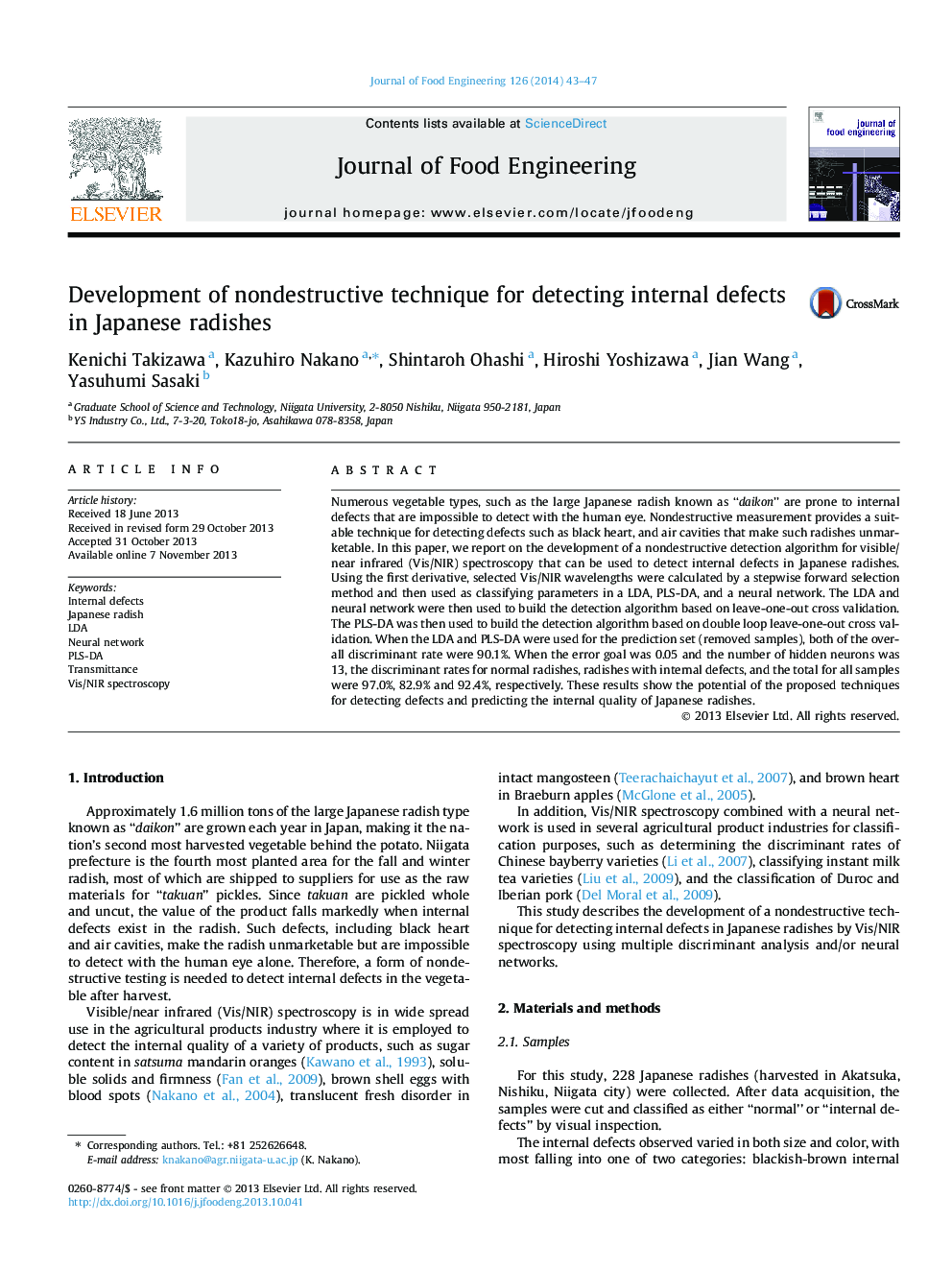| Article ID | Journal | Published Year | Pages | File Type |
|---|---|---|---|---|
| 223179 | Journal of Food Engineering | 2014 | 5 Pages |
•We report on the development of a nondestructive detection algorithm.•The algorithm can be used to detect internal defects in Japanese radishes.•Using the first derivative, selected Vis/NIR wavelengths were calculated.•A neural network using the selected wavelengths achieved 92.4% accuracy.
Numerous vegetable types, such as the large Japanese radish known as “daikon” are prone to internal defects that are impossible to detect with the human eye. Nondestructive measurement provides a suitable technique for detecting defects such as black heart, and air cavities that make such radishes unmarketable. In this paper, we report on the development of a nondestructive detection algorithm for visible/near infrared (Vis/NIR) spectroscopy that can be used to detect internal defects in Japanese radishes. Using the first derivative, selected Vis/NIR wavelengths were calculated by a stepwise forward selection method and then used as classifying parameters in a LDA, PLS-DA, and a neural network. The LDA and neural network were then used to build the detection algorithm based on leave-one-out cross validation. The PLS-DA was then used to build the detection algorithm based on double loop leave-one-out cross validation. When the LDA and PLS-DA were used for the prediction set (removed samples), both of the overall discriminant rate were 90.1%. When the error goal was 0.05 and the number of hidden neurons was 13, the discriminant rates for normal radishes, radishes with internal defects, and the total for all samples were 97.0%, 82.9% and 92.4%, respectively. These results show the potential of the proposed techniques for detecting defects and predicting the internal quality of Japanese radishes.
